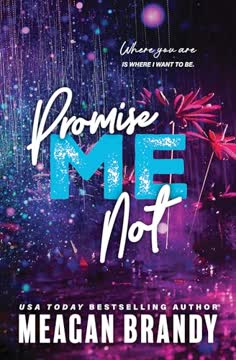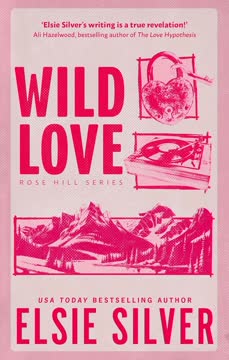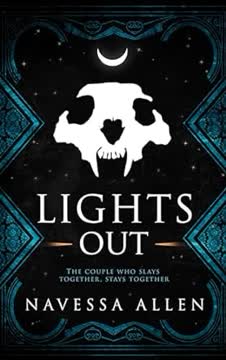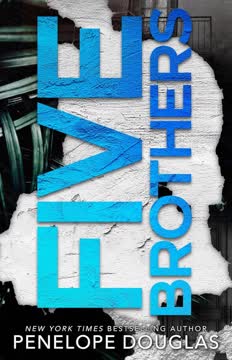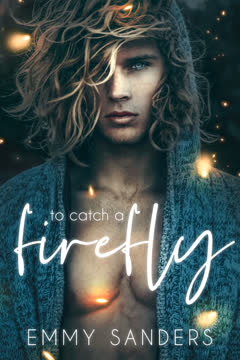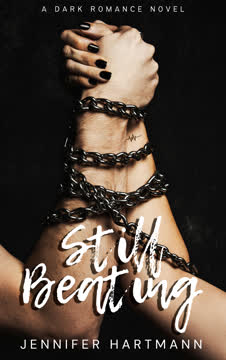Plot Summary
Bruises and Beginnings
Halley Foster's earliest memories are painted in bruises and neglect. Her father's cruelty and her mother's indifference leave her desperate for love and connection. She learns to hide her wounds—both physical and emotional—while clinging to fleeting moments of beauty, like rescuing an injured bunny. But even these small acts of kindness are punished, teaching Halley that love is dangerous and survival means suppressing her needs. This foundation of trauma shapes her worldview, making her both wary and hungry for affection, and sets the stage for the choices and relationships that will define her journey into adulthood.
Lakefront Strangers Collide
On a summer night in 1995, Halley, now seventeen, escapes a hostile home to a lakeside party. There, she meets Reed Madsen, a brooding, much-older man searching for his daughter. Their conversation is electric—filled with music, confessions, and the ache of two lost souls recognizing each other. Halley lies about her age, desperate to be seen as an equal. The connection is immediate and dangerous, culminating in a near-intimate encounter interrupted by the truth: Halley is underage. Reed's horror and Halley's shame fracture the moment, but the encounter leaves an indelible mark on both, igniting a longing neither can easily extinguish.
Unraveling at Christmas
Months later, Halley's life remains bleak—her father's violence escalating, her mother absent in addiction. A chance encounter with Reed at a grocery store on Christmas Eve rekindles their connection. They shop together, sharing small joys and unspoken regrets. Reed notices Halley's bruises and, despite her lies, senses the truth. He quietly slips money into her pocket, giving her the only Christmas gift she'll receive. This act of compassion becomes a lifeline, a reminder that kindness exists even in the darkest seasons, and that fleeting connections can offer hope when family fails.
Shelter and Shattered Bones
After a brutal beating from her father, Halley flees to her friend Tara's house, where she's finally believed and protected. Tara's mother, Whitney, takes Halley in, offering her the safety and care she's never known. As Halley recovers, she struggles with guilt and longing for her mother's love, but finds solace in the warmth of her new home. The trauma lingers, but the presence of Tara, Whitney, and their dog Ladybug begins to fill the void. Halley's sense of belonging grows, even as she fears it's temporary, and she clings to the fragile hope that she might finally be worthy of love.
Tangled in New Homes
Settling into life with Tara's family, Halley discovers that Reed is Tara's father, a revelation that shocks and unsettles her. The forbidden attraction simmers beneath the surface as they navigate awkward family dinners and shared moments. Reed becomes a mentor, teaching Halley self-defense and encouraging her creative pursuits. Their connection deepens through music, photography, and shared vulnerability. Yet, the boundaries blur dangerously, and both struggle to suppress feelings that threaten to upend the fragile stability Halley has found. The tension between desire and duty grows, setting the stage for inevitable heartbreak.
Fever, Care, and First Gifts
On her eighteenth birthday, Halley falls ill, and Reed is the one who cares for her. In her fevered state, she confesses her longing and regret, and Reed's gentle presence offers comfort she's never known. He encourages her artistic dreams, leaving her a cherished gift—a new CD—symbolizing his belief in her. This act, small but profound, deepens their emotional bond. The lines between protector and lover blur further, as both realize the depth of their feelings. Yet, the impossibility of their situation looms, and the fear of discovery shadows every tender moment.
Blips, Bonds, and Boundaries
As Halley heals, she finds joy in simple pleasures—games, music, and photography—with Tara's family. Reed's presence is both a comfort and a torment, as their mutual attraction simmers beneath the surface. They share inside jokes, creative projects, and stolen glances, each moment a "blip" Halley longs to capture forever. Yet, Reed's sense of responsibility keeps him distant, and Halley's growing confidence is tempered by the knowledge that their connection is forbidden. The push and pull between them intensifies, making every interaction charged with possibility and regret.
Lessons in Self-Defense
Determined to reclaim her power, Halley throws herself into self-defense training with Reed. The sessions are grueling, both physically and emotionally, forcing her to confront her fears and insecurities. Reed pushes her hard, refusing to let her give in to weakness. Through sweat and tears, Halley discovers resilience she never knew she had. Their partnership on the mat becomes a metaphor for their relationship—intense, intimate, and fraught with unspoken longing. As Halley grows stronger, so does her desire for Reed, and the boundaries between teacher and student, protector and beloved, become ever more precarious.
Parties, Promises, and Pain
Social events—proms, parties, and family gatherings—become battlegrounds for Halley's heart. She navigates the minefield of teenage romance, friendship, and her secret love for Reed. A series of near-misses and close calls heighten the tension, as jealousy, misunderstandings, and the ever-present threat of exposure loom. When Halley and Reed finally give in to their passion, the consequences are immediate and devastating. Their secret is discovered, shattering the trust of those they love most. The fallout is swift and brutal, forcing Halley to confront the cost of forbidden love.
Secrets, Snapshots, and Scars
The revelation of Halley and Reed's relationship detonates their world. Tara, feeling betrayed by both her father and her best friend, accuses Reed of manipulation and Halley of naivety. Whitney, torn between her roles as mother and protector, struggles to mediate the chaos. Halley is forced to leave the only real home she's ever known, her dreams and relationships in ruins. The pain of separation is compounded by guilt, shame, and the scars—both visible and hidden—that each character carries. The aftermath is a landscape of loss, where forgiveness seems impossible.
Forbidden Fire Ignites
In the wake of the scandal, Halley and Reed are drawn together one last time, unable to resist the pull of their love. Their final encounters are bittersweet—filled with longing, regret, and the knowledge that they must let each other go. They share confessions, apologies, and promises that cannot be kept. The intensity of their connection is matched only by the pain of their separation. Each must choose a path forward—Reed to rebuild his relationship with Tara, Halley to seek healing and purpose elsewhere. Their love, though real, is sacrificed for the greater good.
Collisions and Consequences
Halley moves away, starting a new life in Charleston with the support of friends like Scotty. She pursues her passion for photography, finding meaning in capturing moments of beauty and resilience. Reed, meanwhile, remains haunted by loss and regret, struggling to mend his bond with Tara. Letters and small tokens pass between Halley and Reed, reminders of a love that endures despite distance. Both grow and change, learning to live with the consequences of their choices. The pain of separation becomes a crucible, forging new strength and understanding.
Torn Between Love and Loyalty
Time passes, and the wounds begin to heal. Halley finds success and fulfillment in her work, while Reed continues to support survivors and rebuild his life. Tara, grappling with her own trauma and guilt, slowly comes to terms with the truth of her father's love for Halley. Through therapy, reflection, and the support of Whitney, she learns to distinguish between past betrayals and present realities. The journey toward forgiveness is slow and fraught, but the bonds of family and friendship prove resilient. Each character must choose whether to remain trapped by the past or embrace the possibility of reconciliation.
The Fallout and Flight
Years later, Reed and Halley's paths cross again. The old spark is still there, tempered by wisdom and the scars of experience. They share a tentative reunion—dinners, walks, and dances under the stars—testing whether love can survive the trials of time and distance. Tara, witnessing their enduring connection, finally offers her blessing, recognizing that forgiveness is the only way forward. The family, once fractured, begins to knit itself back together, each member changed but stronger for the journey. The story comes full circle, as love—hard-won and hard-kept—finds its place in the light.
Healing, Distance, and Dreams
Halley and Reed spend years apart, each growing in their own way. Halley's photography flourishes, and she finds purpose in helping others heal. Reed continues his work, supporting survivors and nurturing his relationship with Tara. Letters, emails, and small gestures keep their connection alive, even as they build separate lives. The ache of absence is ever-present, but so is the hope that time and growth will bring them back together. Both learn that healing is not linear, and that dreams deferred are not dreams denied.
Letters, Loss, and Letting Go
As the years pass, Halley and Reed exchange letters and tokens—reminders of the love that shaped them. Each finds closure in their own way, letting go of guilt and embracing the lessons of their journey. Tara, too, finds peace, accepting her father's choices and her own role in the family's story. The past is not forgotten, but it no longer holds them captive. With forgiveness comes freedom, and the possibility of new beginnings. The story's final chapters are marked by acceptance, gratitude, and the quiet joy of lives rebuilt.
Forgiveness and Full Circle
In a final act of grace, Tara reaches out to both Halley and Reed, offering forgiveness and understanding. The family gathers, old wounds acknowledged but no longer festering. Halley and Reed, now older and wiser, are finally free to love each other openly. Their relationship, once forbidden, is now a testament to resilience and the power of second chances. Together, they build a life filled with laughter, creativity, and the warmth of chosen family. The circle is complete, and the story ends not with tragedy, but with hope.
Dancing Under New Moons
Years after their first meeting, Halley and Reed stand together on a moonlit beach, no longer separated by secrets or shame. They dance—finally, freely—under the stars, surrounded by the family they fought so hard to keep. Their love, once a source of turmoil, is now a beacon of healing and possibility. The scars remain, but they are no longer wounds; they are reminders of battles fought and won. The story closes on a note of celebration, as Halley and Reed, older and unbroken, embrace the life they have built—proof that even the most forbidden love can find its place in the world.
Characters
Halley Foster
Halley is the emotional heart of the story—a young woman shaped by childhood abuse, neglect, and a desperate hunger for love. Her journey is one of resilience: she transforms from a wounded, self-doubting girl into a strong, creative, and compassionate adult. Halley's relationships—with Reed, Tara, and Whitney—are marked by longing, fear, and the search for safety. Her passion for photography symbolizes her desire to capture fleeting moments of beauty amid chaos. Psychologically, Halley is both vulnerable and fiercely determined, learning to trust herself and others as she navigates trauma, forbidden love, and the slow work of healing. Her development is a testament to the power of chosen family and the courage to claim happiness.
Reed Madsen
Reed is a complex figure—older, haunted by his own past, and driven by a need to protect and nurture. As a father, mentor, and self-defense instructor, he embodies strength and responsibility, but his attraction to Halley exposes his vulnerabilities and moral conflicts. Reed's relationship with Halley is both redemptive and destructive, forcing him to confront the boundaries between care and desire, duty and longing. His guilt over betraying Tara and the family he loves is palpable, and his journey is one of atonement, sacrifice, and ultimately, the pursuit of forgiveness. Reed's psychological arc is defined by his struggle to reconcile love with ethics, and his willingness to risk everything for the people he loves.
Tara Stephens
Tara is Halley's best friend and Reed's daughter—a bright, loyal, and loving presence whose world is upended by the revelation of Halley and Reed's relationship. Her initial reaction is one of betrayal and anger, shaped by her own past trauma and the fear of repeating old patterns. Tara's journey is one of grappling with trust, forgiveness, and the complexity of love. She must learn to distinguish between real harm and perceived betrayal, and her eventual acceptance is hard-won. Tara's psychological depth lies in her struggle to balance loyalty to her father, her friend, and herself, and her growth is a key to the family's ultimate healing.
Whitney Stephens
Whitney, Tara's mother and Halley's surrogate parent, is a steady, compassionate presence throughout the story. As a social worker, she is attuned to trauma and the nuances of healing, offering Halley the safety and care she never received at home. Whitney's own history of mistakes and forgiveness informs her approach to the family's crisis, and she serves as a bridge between past and future, pain and possibility. Her ability to hold space for both anger and love makes her a model of mature empathy and resilience.
Halley's Father
Halley's father is a shadowy, violent figure whose abuse leaves lasting scars—physical and psychological. He represents the generational cycle of pain and the obstacles Halley must overcome to find self-worth and trust. His presence lingers even after he is gone, a reminder of the damage inflicted by those meant to protect. His role is less as a character than as a force Halley must reckon with and ultimately transcend.
Ladybug
Ladybug, the family dog, is a constant source of comfort and joy for Halley and Tara. Her presence represents the healing power of simple, steadfast affection. Ladybug's loyalty and warmth offer a counterpoint to the human betrayals in the story, and her role in key moments—such as Halley's lowest points—underscores the importance of nonjudgmental companionship in recovery.
Scotty
Scotty is Halley's confidant and, for a time, her romantic interest. He provides stability, understanding, and support as Halley rebuilds her life in Charleston. His unrequited love for Halley is handled with maturity, and his eventual happiness with another partner reflects the story's theme of growth and moving on. Scotty's presence allows Halley to experience healthy male friendship and partnership, reinforcing her journey toward self-worth.
Monique
Monique, Halley's photography partner, is a vibrant, supportive figure who encourages Halley's artistic ambitions. She represents the possibility of reinvention and the importance of community in healing. Monique's humor, wisdom, and no-nonsense approach help Halley find her professional footing and personal confidence.
Halley's Mother
Halley's mother is a tragic figure—absent, addicted, and unable to protect her daughter. Her neglect is a source of deep pain for Halley, fueling her longing for maternal love and her fear of abandonment. The mother's absence is a wound that never fully heals, but Halley's eventual acceptance of this loss is part of her journey toward self-compassion.
Tara's New Family
In the story's final chapters, Tara's own journey toward love and forgiveness mirrors Halley's. Her willingness to build new relationships and support Halley and Reed's happiness signals the possibility of breaking cycles of pain and creating new, healthier patterns. Tara's growth is a testament to the story's belief in the power of time, empathy, and second chances.
Plot Devices
Dual Narratives and Time Jumps
The novel employs a dual narrative structure, alternating between Halley and Reed's perspectives, and frequently shifting between past and present. This allows readers to experience the evolution of their relationship, the weight of their histories, and the consequences of their choices in real time. The use of time jumps—moving from adolescence to adulthood, from trauma to healing—mirrors the nonlinear nature of recovery and love. Foreshadowing is used throughout, with early moments (the lake, the bunny, the first gift) echoing in later chapters, creating a sense of inevitability and emotional payoff. The story's structure emphasizes the importance of memory, the persistence of the past, and the possibility of rewriting one's narrative.
Analysis
Older is a raw, unflinching exploration of trauma, forbidden love, and the long, winding road to healing. Jennifer Hartmann crafts a story that refuses easy answers, instead delving into the messy realities of desire, loyalty, and the scars we carry. At its core, the novel asks whether love can truly redeem, or if some wounds are too deep to heal. Through Halley and Reed's journey, we see the power of chosen family, the necessity of forgiveness, and the courage required to claim happiness after pain. The book challenges readers to question societal taboos, the nature of consent, and the complexities of age-gap relationships, all while honoring the resilience of survivors. Ultimately, Older is a testament to the idea that even the most broken among us can find wholeness—not by erasing the past, but by embracing it, learning from it, and daring to love again.
Last updated:
FAQ
```markdown
Synopsis & Basic Details
What is Older about?
- A Forbidden Love Story: "Older" by Jennifer Hartmann explores the intense, complicated, and ultimately forbidden love story between Halley Foster, a young woman escaping a traumatic past, and Reed Madsen, an older man who is also the father of her best friend, Tara. The narrative traces their connection from Halley's late teens into her early twenties, highlighting the emotional and societal challenges they face.
- Healing from Trauma: At its heart, the novel is a profound journey of healing and resilience. Halley, a survivor of severe childhood abuse and neglect, finds solace and strength through her relationships with Reed, Tara, and Tara's mother, Whitney. The story delves into how she reclaims her sense of self, purpose, and worth despite her deep-seated trauma.
- The Cost of Secrets: The book intricately weaves themes of loyalty, betrayal, and the devastating consequences of secrets. The clandestine nature of Halley and Reed's relationship creates a ripple effect, impacting their bonds with Tara and Whitney, forcing them to confront difficult truths about love, family, and personal sacrifice.
Why should I read Older?
- Emotionally Charged Narrative: Readers should pick up "Older" for its raw, unflinching emotional depth. Jennifer Hartmann doesn't shy away from the messy realities of trauma, desire, and the complexities of human connection, offering a story that is both heartbreaking and ultimately hopeful.
- Deep Character Exploration: The novel excels in its psychological portrayal of characters, particularly Halley and Reed. Their internal struggles, motivations, and growth are meticulously detailed, inviting readers to empathize with their difficult choices and root for their hard-won happiness.
- Thought-Provoking Themes: Beyond the romance, "Older" tackles significant themes like the nature of consent, the impact of abuse, the power of chosen family, and the long road to forgiveness. It challenges readers to look beyond societal norms and consider the nuances of love in unconventional circumstances.
What is the background of Older?
- Contemporary Illinois Setting: The story is primarily set in northern Illinois, beginning in the mid-1990s and spanning into the early 2000s. This contemporary setting allows for relatable cultural touchstones like grunge music, roller rinks, and early internet chatrooms, grounding the intense emotional narrative in a familiar, nostalgic backdrop.
- Focus on Trauma and Recovery: The narrative is deeply informed by the psychological impact of childhood abuse, particularly domestic violence and neglect. Halley's journey reflects the non-linear process of healing, emphasizing the importance of safe spaces, supportive relationships, and self-empowerment in overcoming profound trauma.
- Exploration of Age-Gap Relationships: A central element of the story is the significant age difference between Halley and Reed. The novel explores the societal perceptions and moral dilemmas surrounding such relationships, particularly when one party is initially underage, forcing characters and readers alike to grapple with questions of ethics, maturity, and genuine connection.
What are the most memorable quotes in Older?
- "Life is like photography. You need the negatives to develop.": This quote, appearing early in the book, serves as a powerful thematic anchor. It foreshadows Halley's journey, suggesting that her painful past (the "negatives") is essential for her growth and eventual flourishing, much like a photograph needs its negatives to reveal its full image. It encapsulates the novel's message of finding beauty and strength through adversity.
- "You're not broken. When something breaks you, you pick up the pieces and put yourself back together. Maybe it's with stitches and glue sticks, but it's enough to keep going. Nobody needs to stay broken.": Reed delivers this profound statement to Halley during a moment of extreme vulnerability. It's a pivotal quote that defines Halley's arc, emphasizing resilience and the active process of healing. It highlights Reed's role as a protector and mentor, instilling in Halley the belief that her scars are not signs of weakness but testaments to her strength.
- "I love you fiercely, wholly, selfishly and unselfishly, more than I ever fucking should. I love everything about you... Now…tell me how that changes anything.": This raw confession from Reed encapsulates the central conflict of the novel. It reveals the depth of his forbidden love for Halley while simultaneously acknowledging the insurmountable obstacles they face. The heartbreaking question, "how that changes anything," underscores the tragic reality that love alone is often not enough to overcome societal judgment and personal sacrifice.
What writing style, narrative choices, and literary techniques does Jennifer Hartmann use?
- First-Person Dual Perspective: Hartmann employs a first-person dual perspective, alternating between Halley and Reed's viewpoints. This choice allows for deep immersion into the psychological states and emotional turmoil of both protagonists, providing a nuanced understanding of their individual struggles and their complex connection. It builds empathy and reveals the internal conflicts that drive their actions.
- Non-Linear Narrative with Time Jumps: The story utilizes a non-linear structure with significant time jumps, particularly in the early chapters. This technique mirrors the fragmented nature of memory and trauma, gradually revealing Halley's past and the evolution of her relationship with Reed. It creates suspense and allows readers to piece together the full emotional landscape of their journey.
- Symbolism and Metaphor: Hartmann frequently uses symbolism and metaphor to enrich the narrative. Recurring motifs like photography ("blips," "negatives to develop"), water (the lake, the ocean, drowning), and physical scars serve as powerful representations of healing, memory, and emotional depth. For example, Halley's photography is not just a hobby but a way for her to "immortalize" moments and find meaning in her chaotic life.
Hidden Details & Subtle Connections
What are some minor details that add significant meaning?
- The "Comet" Nickname and its Evolution: Reed's nickname for Halley, "Comet," initially seems a simple reference to her name. However, it subtly symbolizes her transient, often chaotic existence ("soared past his lips. A bright, cosmic phenomenon lighting up my insides and colliding with my heart" - Chapter 2) and her eventual journey of self-discovery. By the end, when Reed whispers "Comet" during their reunion, it signifies her return to his orbit, no longer lost but a guiding light. This detail highlights Halley's journey from feeling like a "waste of space" to a celestial body.
- The Significance of the Rice Krispies: The seemingly trivial box of holiday-themed Rice Krispies that Halley buys for Reed on Christmas Eve (Chapter 3) and later finds in his apartment (Chapter 26) is a subtle marker of their enduring, unspoken connection. It's a small, thoughtful gesture that Reed remembers and cherishes, symbolizing the quiet acts of care that define their bond outside the dramatic moments. It also subtly links to themes of childhood and simple comforts, contrasting with the complexity of their adult relationship.
- The "Morning Glory" Flower and Song: Halley's discovery of the morning glory flower's symbolism (unrequited love) and Reed's cynical correction (a drug reference) in Chapter 6 and 7 is a poignant detail. It foreshadows the painful, unacknowledged nature of their early love and the harsh realities that temper Halley's romantic idealism. The later Oasis album, "What's the Story, Morning Glory?", becomes a recurring motif, representing their shared, yet often misunderstood, emotional landscape.
What are some subtle foreshadowing and callbacks?
- Halley's Early Desire for "Strings": In Chapter 1, when Reed offers Halley a ride, she thinks, "Then again…maybe I wanted strings. Something to tether me. To anchor my floundering heart." This seemingly throwaway line subtly foreshadows her deep-seated need for connection and stability, which later draws her into the complicated relationship with Reed, seeking an anchor in a chaotic life. It hints at her vulnerability and longing for a lasting bond.
- Reed's Scar and Halley's Bruises as Parallel Wounds: The revelation of Reed's stab wound scar in Chapter 13, mirroring Halley's belt-lash scars, is a powerful callback to their shared experience of violence and trauma. Reed explicitly states, "A knife. A belt. Different weapons, same wounds." This connection, hinted at earlier by Halley's instinctive flinching, establishes a deep, unspoken understanding between them, suggesting their bond is rooted in shared pain and resilience, not just forbidden attraction.
- The "Save the Last Dance for Me" Song: Halley mentions this song in Chapter 2, and Reed notes a "really good cover of that song by Harry Nilsson." This seemingly innocent exchange becomes a poignant callback in Chapter 21 when Reed plays that very cover for Halley, inviting her to dance after their Prom night confession. It symbolizes their longing for a "last dance" before their inevitable separation, a final, cherished moment of intimacy that transcends their difficult reality.
What are some unexpected character connections?
- Whitney's Past Betrayal and its Echo in Tara's Reaction: The revelation in Chapter 13 that Whitney "slept with his brother" (Radley) and "betrayed his trust" is an unexpected connection that profoundly influences Tara's later reaction to Halley and Reed. Whitney's regret ("trying to catch smoke with your bare hands") and her subsequent overprotective stance against "wrong" relationships directly inform Tara's belief that Reed "groomed" Halley. This past trauma in Whitney's life creates a powerful, albeit misguided, parallel for Tara, making her judgment of Reed and Halley even more rigid.
- Scotty's Unrequited Love and his Role as Confidant: Scotty's quiet, steadfast affection for Halley, which is subtly hinted at through his actions and later confirmed by Halley's internal thoughts, creates an unexpected emotional triangle. His willingness to cover for Halley's relationship with Reed, despite his own feelings, highlights his deep loyalty and selflessness. This connection provides Halley with a safe space to confide in, even as it underscores the complexity and pain of her situation.
- Ladybug as a Bridge Between Halley and Reed: Ladybug, the family dog, serves as an unexpected, innocent connection between Halley and Reed. From Halley's initial bond with the dog (Chapter 4) to Reed's microchip registration (Chapter 18) and his later photograph of Ladybug and Nico (Chapter 35), the dog consistently brings them together. Ladybug's unconditional love and presence often diffuse tension and provide comfort, symbolizing the pure, uncomplicated affection that contrasts with the human drama.
Who are the most significant supporting characters?
- Whitney Stephens: The Unsung Moral Compass: Whitney, Tara's mother, is far more than a surrogate parent; she's the story's moral anchor and a testament to the power of forgiveness and empathy. Her own past mistakes (sleeping with Reed's brother, Chapter 13) give her a unique perspective on complex relationships and betrayal, allowing her to guide Tara and eventually accept Halley and Reed's love. Her role as a social worker further emphasizes her capacity for understanding trauma and offering unconditional support, making her instrumental in Halley's healing and the family's eventual reconciliation.
- Scotty: The Steadfast, Selfless Friend: Scotty evolves from a self-defense student to Halley's closest confidant and a symbol of healthy, platonic love. His unrequited feelings for Halley are handled with remarkable maturity, as he consistently prioritizes her well-being and happiness, even covering for her relationship with Reed (Chapter 23). Scotty represents the possibility of genuine friendship and support outside of romantic entanglement, providing Halley with a safe harbor and demonstrating that not all love needs to be possessive or destructive.
- Ladybug: The Embodiment of Unconditional Love: Ladybug, the golden retriever, is a constant, non-judgmental source of comfort for Halley. Her presence is significant in moments of Halley's deepest despair (e.g., after her father's abuse, Chapter 4; during her illness, Chapter 6). Ladybug symbolizes the healing power of simple, unconditional affection and the importance of animal companionship in trauma recovery. Her eventual reunion with Halley in the epilogue underscores the theme that true connections, even non-human ones, find their way back.
Psychological, Emotional, & Relational Analysis
What are some unspoken motivations of the characters?
- Halley's Pursuit of Reed as a Quest for Control and Worth: Beyond romantic attraction, Halley's relentless pursuit of Reed is an unspoken motivation rooted in her traumatic past. Her father's constant degradation ("You've never been good at doing hard things," "worthless nobody") instilled a deep need to prove her worth and exert control over her life. Reed, as a self-defense instructor and a man who "sees" her strength, represents the antithesis of her father. Her desire for him is intertwined with a desperate need for validation, safety, and the power to choose her own path, even if it's a forbidden one.
- Reed's Self-Sabotage as a Form of Protection: Reed's repeated attempts to push Halley away and his eventual self-sacrificing lie to Tara (Chapter 31) are driven by an unspoken, deeply ingrained protective instinct. Haunted by his own past trauma (the stab wound, Chapter 13) and the pain of his broken family, he fears repeating destructive patterns. His self-sabotage is a desperate attempt to protect Halley from the societal judgment and emotional fallout of their relationship, and to shield Tara from further pain, even at the cost of his own happiness and reputation.
- Tara's Fierce Loyalty and Fear of Betrayal: Tara's extreme reaction to Halley and Reed's relationship is motivated by an unspoken, deep-seated fear of betrayal, stemming from her past experience with Mr. Baker and Stacy (Chapter 33). Her fierce loyalty to Halley is genuine, but it's colored by her own unresolved trauma, leading her to project the "grooming" narrative onto her father. Her motivation is not malice, but a desperate need to protect her best friend from what she perceives as a dangerous, manipulative situation, driven by her inability to reconcile her father's actions with her idealized image of him.
What psychological complexities do the characters exhibit?
- Halley's Trauma-Informed Attachment and Resilience: Halley exhibits complex psychological responses to her abuse, including a tendency towards trauma-informed attachment, where she seeks intense connection and validation from figures like Reed. Her initial lie about her age (Chapter 1) and her desperate need for Reed's attention stem from a deep-seated fear of abandonment and a longing for unconditional love. Simultaneously, she displays remarkable resilience, channeling her pain into strength through self-defense and photography, actively working to rewrite her narrative and overcome the "helpless, awful feeling" (Chapter 12) that once defined her.
- Reed's Protector Complex and Moral Conflict: Reed's character is marked by a strong protector complex, stemming from his own past trauma (the knife attack, Chapter 13) and his role as a father and self-defense instructor. This complex drives his initial care for Halley, but it clashes with his forbidden attraction, creating intense moral conflict. He struggles with the psychological burden of his desire, viewing it as "sick" and "twisted" (Chapter 29) due to the age gap and his relationship with Tara. His decision to sacrifice his reputation for Halley's protection (Chapter 31) highlights the depth of his internal struggle between personal desire and ethical responsibility.
- Tara's Projection and Idealization of Family: Tara's psychological complexity lies in her tendency to idealize her family and project past traumas onto new situations. Her unwavering belief in her parents' potential reconciliation (Chapter 9) and her inability to accept Reed's love for Halley are rooted in her own unresolved pain from the Stacy incident (Chapter 33). She projects the "groomer" narrative onto her father, struggling to reconcile his actions with her idealized image of him. This psychological defense mechanism, while understandable, initially prevents her from seeing the truth and causes significant emotional damage to those she loves.
What are the major emotional turning points?
- Halley's Panic Attack in the Alleyway (Chapter 12): This scene is a major emotional turning point for Halley, as it forces her to confront the lingering, debilitating effects of her trauma. Her breakdown, triggered by a seemingly innocuous word ("lamb"), reveals the depth of her psychological wounds. Reed's compassionate response—holding her, soothing her, and validating her pain—solidifies their emotional bond and marks a shift in Halley's journey from passive victim to active survivor, inspiring her to seek self-defense training.
- Reed's Self-Sacrificing Lie to Tara (Chapter 31): This is a devastating emotional turning point for Reed, where he chooses to sacrifice his relationship with Tara and his reputation to protect Halley. His confession, "I did this. I took advantage of Halley when she was vulnerable, and I hate myself for it," is a profound act of love and self-immolation. It highlights the depth of his commitment to Halley's well-being, even at the cost of his own, and underscores the tragic consequences of their forbidden love.
- Tara's Discovery of the Scrapbook (Chapter 38): The moment Tara finally looks through Halley's scrapbook is a crucial emotional turning point for her. The photographs, particularly the one of Reed looking at Halley with love ("He sees me"), force Tara to confront the truth of their connection. This visual evidence, combined with Whitney's wisdom, allows Tara to move past her anger and projection, initiating her journey toward forgiveness and understanding, and ultimately paving the way for reconciliation.
How do relationship dynamics evolve?
- Halley and Reed: From Forbidden Spark to Enduring Love: Their relationship dynamically evolves from an initial, dangerous spark fueled by Halley's lie and Reed's protective instincts (Chapter 1) to a deep, enduring love forged through shared trauma and mutual respect. The dynamic shifts from a mentor-student relationship (self-defense training, Chapter 8) to a clandestine affair (Chapter 22, 26), and finally, after years of separation and growth, to an open, accepted partnership (Epilogue). This evolution highlights the power of their connection to transcend societal barriers and personal sacrifices.
- Halley and Tara: From Found Sisters to Fractured Friendship and Back: The dynamic between Halley and Tara transforms from a bond of found sisterhood and unwavering loyalty (Chapter 4) to one of profound betrayal and anger (Chapter 30). Tara's perception of Halley as a "victim" and Reed as a "groomer" creates a deep rift. However, through Halley's scrapbook and Tara's own journey of understanding and forgiveness, their friendship eventually heals, evolving into a mature, resilient bond that acknowledges past pain but embraces future connection (Epilogue).
- Reed and Tara: From Loving Father-Daughter to Estrangement and Reconciliation: Reed and Tara's relationship undergoes a dramatic shift from a close, loving father-daughter dynamic (Chapter 1, 5) to one of estrangement and deep hurt after the truth is revealed (Chapter 31). Tara's accusation of "grooming" shatters Reed. Their dynamic then enters a period of painful distance and slow, arduous reconciliation, driven by Whitney's mediation and Tara's eventual understanding. By the epilogue, their bond is restored, albeit changed, reflecting the hard-won nature of forgiveness and the enduring power of familial love.
Interpretation & Debate
Which parts of the story remain ambiguous or open-ended?
- The Full Extent of Halley's Mother's Redemption: While Halley eventually acknowledges that her mother "missed out on me" (Chapter 33), the narrative doesn't fully explore her mother's journey or potential for redemption. Her absence remains a poignant, unresolved wound for Halley, and readers are left to wonder if she ever truly confronted her addiction or sought to reconnect. This ambiguity highlights the lasting impact of parental neglect and the reality that not all relationships find closure.
- The Long-Term Societal Acceptance of Halley and Reed's Relationship: Although
Review Summary
Older received mixed reviews, with ratings ranging from 1 to 5 stars. Many readers praised the emotional depth, forbidden romance, and age gap elements, finding the story captivating and well-executed. However, some critics felt uncomfortable with the age difference and found the characters' behavior problematic. Positive reviews highlighted the author's writing style, character development, and ability to handle sensitive topics. Negative reviews cited pacing issues, repetitive dialogue, and concerns about the relationship dynamics. Overall, the book elicited strong reactions, both positive and negative.
Similar Books
Download PDF
Download EPUB
.epub digital book format is ideal for reading ebooks on phones, tablets, and e-readers.


